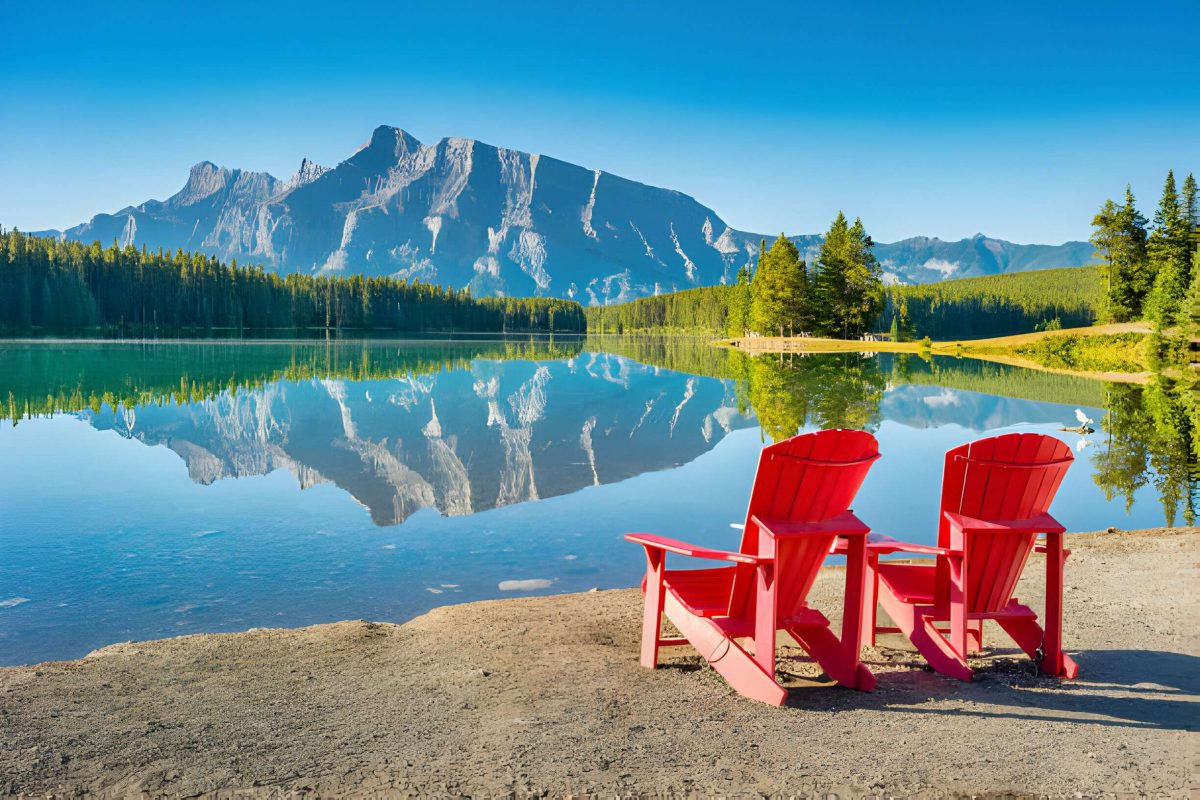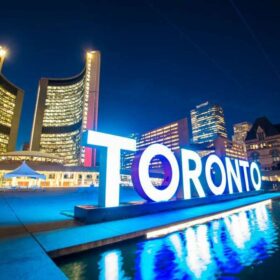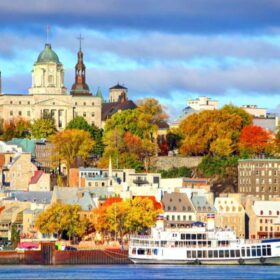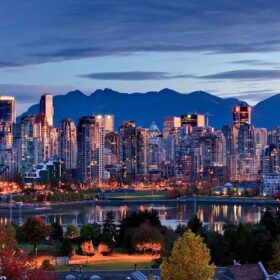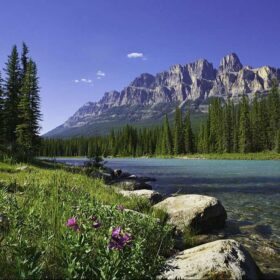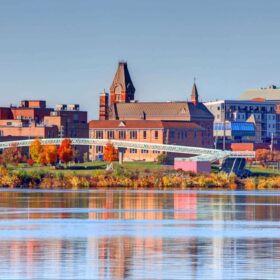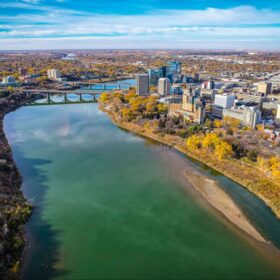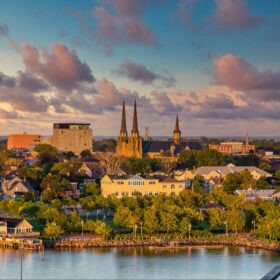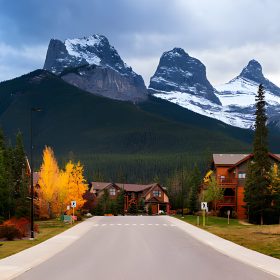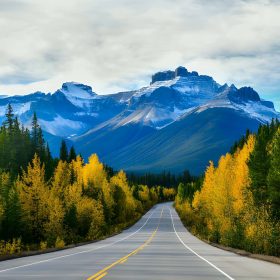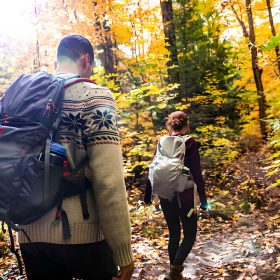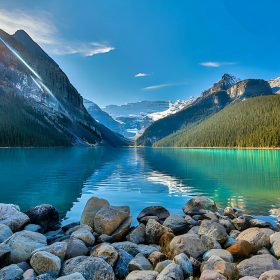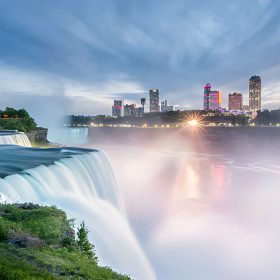Alberta’s parks boast some of the most breathtaking scenery in Canada, making them ideal additions to your sightseeing itinerary. From mountains to prairies, foothills, and everything in between, the diverse landscapes offer nearly limitless opportunities to immerse yourself in the outdoors. While Alberta’s renowned national parks often take the spotlight, the lesser-known provincial parks remain hidden gems waiting to be discovered.
Alberta is a haven for nature enthusiasts, offering endless activities throughout the year. In the summer, load up your car for a camping adventure in Jasper, embark on mountain biking trails in Kananaskis Country, paddle across the serene waters of Waterton Lakes, or engage in high-altitude hikes in Banff National Park. For a more leisurely but equally enjoyable experience, explore Dinosaur Provincial Park or stroll along the Bow River’s pathways in Calgary.
As winter blankets the region, indulge in downhill skiing at Banff’s resorts, traverse snowshoe trails in the foothills, or glide along the tracks at Canmore’s Nordic Center. After putting in the effort, treat yourself to a rejuvenating soak in the renowned Banff Hot Springs.
Discover the perfect outdoor experience with our curated list of the best parks in Alberta.
1. Banff National Park
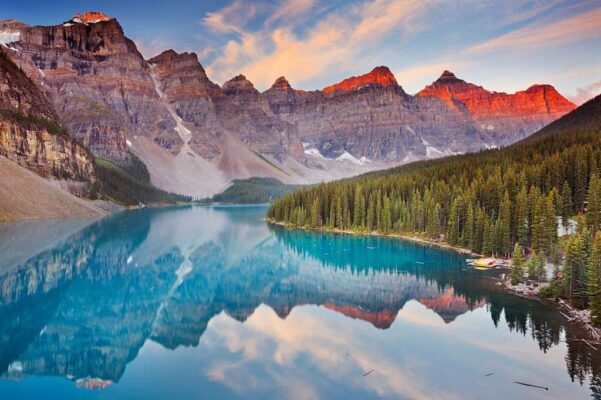
No compilation of Alberta’s top parks would be comprehensive without acknowledging Banff National Park. This vast mountain paradise offers a plethora of activities for solo adventurers, families, or groups. A convenient two-hour drive from Calgary, the moment you enter the park, you’ll be tempted to pull over and start capturing photographs.
The list of things to do in Banff is almost endless, allowing you to be as active or relaxed as you prefer. Highlights easily accessible by car include the charming town of Banff, featuring a delightful main street with intriguing shops and restaurants, the turquoise-hued Lake Louise and Moraine Lake, and the Icefields Parkway, guiding you past glaciers and additional alpine lakes.
The optimal time to explore Banff is during the summer due to the multitude of activities available. The park boasts excellent hiking trails, winding mountain bike trails through the forests, and, for the adventurous, opportunities for peak climbs. Conclude your day by returning to a luxurious hotel in Banff or Jasper or nestle into your cozy tent at one of the numerous campgrounds.
During the winter season, a visit to Banff offers deep snow adventures at Sunshine Village ski resort, challenging slopes at Mount Norquay, or leisurely glides on the extended groomers at Lake Louise Ski Resort—three of the best ski resorts Alberta. For a more romantic experience, consider checking into the Fairmont Chateau Lake Louise and enjoying a skating session with your loved one.
2. Jasper National Park
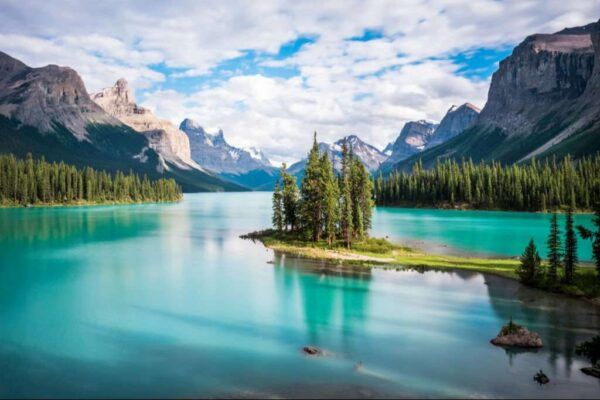
Following closely behind Banff National Park is Jasper National Park. The transition from one park to the other might go unnoticed, as your attention will likely be captivated by the glaciers towering above the Icefields Parkway upon entry.
Jasper National Park stands as a mountainous haven, and a visit here wouldn’t be complete without stopping at the remarkable Athabasca Glacier. Situated 103 kilometers from the Jasper townsite, this expansive ice tongue extending from the Columbia Icefield is one of the park’s most easily accessible glaciers.
Spirit Island on Maligne Lake holds iconic status as one of the most renowned images from Jasper National Park. This picturesque lake often graces postcards and travel agency displays. While you can drive to the lake, the exclusive route to Spirit Island, positioned 14 kilometers up the lake, involves taking a tour or paddling.
Jasper National Park is a prime location for witnessing enchanting waterfalls. If your journey takes you to the Athabasca Glacier, make sure to pause at Tangle Falls, Sunwapta Falls, and Athabasca Falls as you make your way back toward the Jasper townsite.
Another notable attraction in the park is Mount Edith Cavell and the glacial pond at its base. Here, you can observe icebergs drifting in the water, breaking off from the suspended terminus of the Angel Glacier perched above.
3. Wood Buffalo National Park
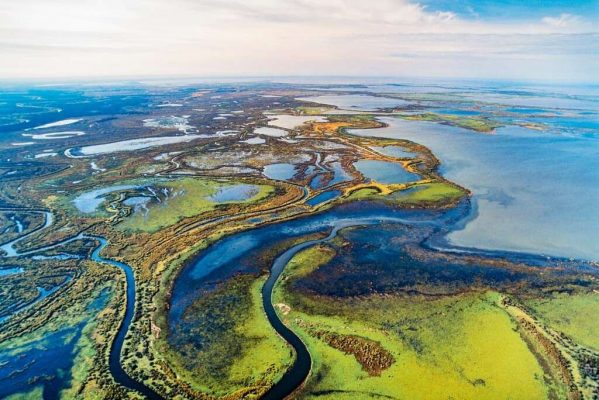
If you’re seeking a true escape where nature takes the lead, Wood Buffalo National Park is the ultimate destination. Positioned in the far northwest corner of the province, this is the largest national park in Canada.
Here, the emphasis is on nature—wildlife holds sway, and human presence is a fleeting part of the landscape. For an authentic experience, embark on a multi-day canoe trip to the Peace-Athabasca Delta. Recognized as one of the world’s premier avian destinations, this region attracts millions of waterfowl each summer to its vast wetlands.
The park offers other enjoyable activities, such as swimming in expansive sinkholes with turquoise-hued water and strolls across immense salt pans. Both experiences are easily accessible from the main roads.
Whether you opt for front-country camping (car camping) or venture into the backcountry, you’ll relish the serene nights beneath skies adorned with billions of stars.
4. Lesser Slave Lake Provincial Park
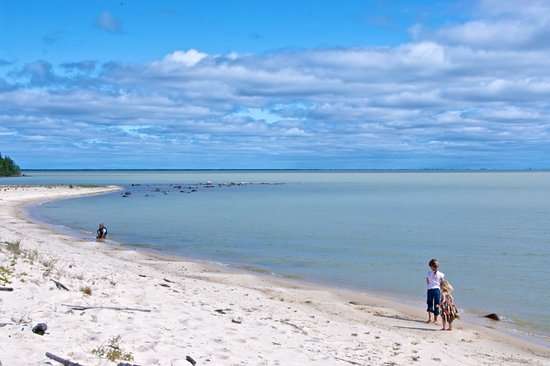
Lesser Slave Lake Provincial Park is conveniently located within a three-hour drive from Edmonton. The park encompasses two areas along the lake, but the Marten River section at the east end of the lake is the primary destination for most visitors.
This area boasts extensive beaches adorned with driftwood, perfect for collecting and using in your evening campfire. The lake’s shallow and clear waters are well-suited for swimming and various aquatic activities. Camping is a popular choice, and the campground, equipped with 67 sites set just back from the lake, offers a comfortable stay.
For fishing enthusiasts, this is an ideal location. Lesser Slave Lake, being a vast water body, is renowned for its impressive catches of walleye. Other species, including pike and the elusive burbot, provide additional angling opportunities. One of the prime fishing spots is near the mouth of the Lesser Slave River at the east end of the lake.
5. Waterton Lakes National Park
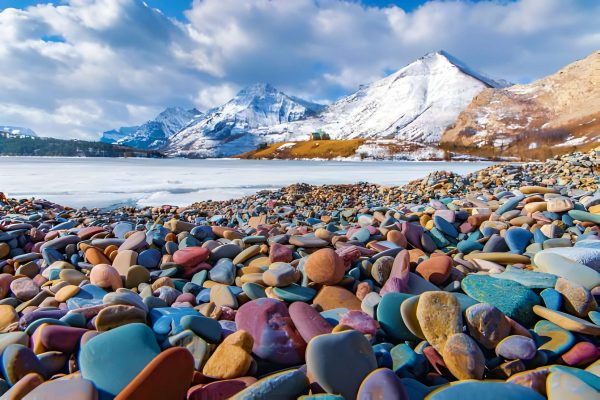
Situated in the southwestern corner of Alberta, Waterton Lakes National Park stands out as one of the more distinctive parks in Canada. Occupying a special environmental zone where the mountains abruptly transition into the prairies, the park boasts sights found nowhere else.
At the entrance to a valley with Waterton Lake in the background, the impressive Prince of Wales Hotel stands like a sentinel on the rise.
With over 200 kilometers of hiking trails to explore, including the renowned Crypt Lake trail that passes through a tunnel in the rock, there’s no shortage of outdoor activities. Camping is an option at one of the three campgrounds (one is currently closed due to fire damage), and visitors can also enjoy the lakes on a cruise or in a kayak or experience the thrill of kiteboarding in the ever-present wind. The charming town invites exploration with its shops, restaurants, and laid-back atmosphere.
Located 270 kilometers southwest of Calgary near the U.S. border, the park is part of the Waterton-Glacier International Peace Park, which also includes Montana’s Glacier National Park on the American side.
6. Elk Island National Park
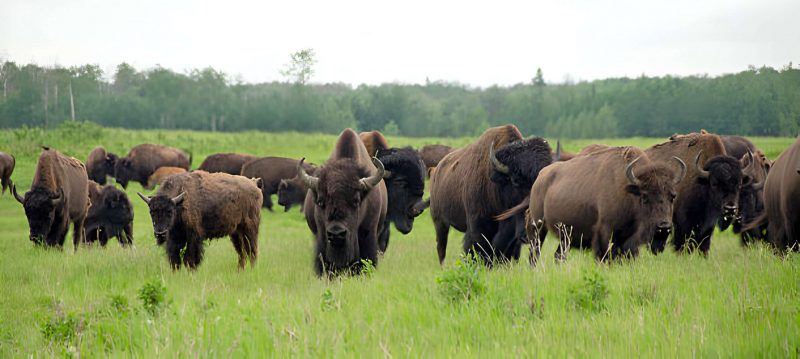
For those interested in witnessing Alberta’s large animals in their natural habitat, this UNESCO-designated Biosphere Reserve stands out as one of the best places to observe bison, elk, and other wildlife. Remarkably, this special place is only a 30-minute drive from Edmonton.
Immerse yourself in nature by leisurely walking on one of the park’s numerous trails, or venture onto the water to explore its many lakes with a rented canoe or kayak.
A haven for bird watchers, Elk Island National Park hosts over 250 species of birds. The park features a diverse ecosystem with aspen parkland, boreal forests, wetlands, and grasslands, each offering its unique charm.
Whether for a day trip or an overnight stay, Elk Island National Park provides a range of recreational activities, including camping, picnicking, fishing, and boating. Popular pursuits also include hiking, cycling, and cross-country skiing in the winter.
Make the most of your visit by exploring the park’s history at the visitor center and participating in interpretive programs.
7. Dinosaur Provincial Park
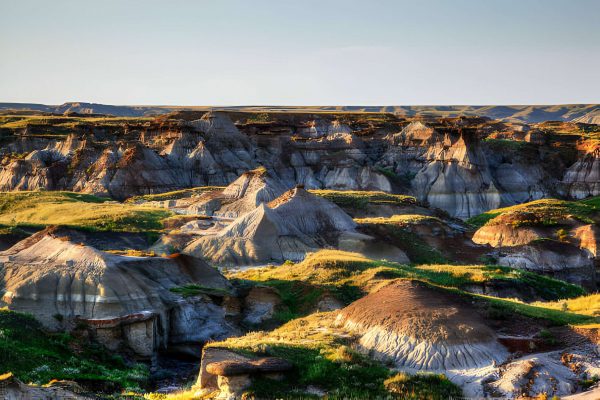
Dinosaur Provincial Park, another of Alberta’s six UNESCO World Heritage Sites, offers one of the best family trips, captivating children with giant dinosaur skeletons, engaging exhibits, and a “scramble zone” of badlands for running and climbing.
For a deeper understanding of this ancient site’s history, consider taking one of the park’s insightful tours. Due to high demand, it’s advisable to book your preferred tour in advance online.
The park is traversed by the Red Deer River, providing an opportunity to launch your canoe or kayak upstream at Steveville Campground and leisurely float downstream for two or three hours to the park.
Camping options are available within the park, offering a choice of 126 sites in various formats, including serviced and unserviced. The Coulee viewpoint trail starts from the south end of the campground.
It’s important to note that Dinosaur Provincial Park should not be confused with the Royal Tyrrell Museum near Brooks. While both places focus on dinosaurs, one is a provincial park, and the other is a private establishment.
8. Kinbrook Island Provincial Park
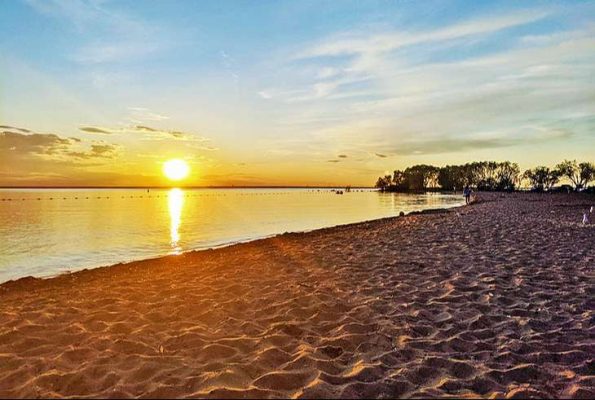
Kinbrook Island Provincial Park revolves around water, occupying an island in Lake Newell, one of Alberta’s beloved lakes. This verdant island park boasts one of the province’s finest beaches, drawing Albertans from various locations to enjoy swimming, boating, or simply basking in the sun on the sandy shores.
For camping enthusiasts, this park stands out as one of the premier destinations in the province. The campground offers a delightful blend of 199 serviced and unserved sites.
Additionally, Kinbrook Island Provincial Park serves as a prime location for birdwatching. The expansive water body attracts a diverse range of birds from the surrounding predominantly dry land.
9. Peter Lougheed Provincial Park
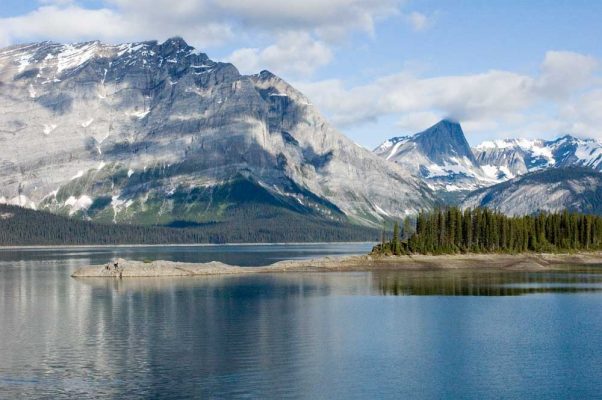
Calgary residents enjoy nearly exclusive access to one of the finest provincial parks. Located just 1.5 hours from the city, Peter Lougheed Provincial Park offers an ideal destination for a day of mountain adventure.
Situated deep within Kananaskis Country, the park features rugged mountains, pristine rushing rivers, and abundant wildlife. Some even claim that spotting grizzly bears is more likely here than in Banff. Additionally, hikers in the area may encounter moose and various other creatures.
With over 40 trails of different lengths and difficulty levels, the park is a haven for hiking enthusiasts. Cyclists can explore pleasant and paved biking trails, as well as more challenging routes that demand additional endurance.
During winter, the Kananaskis Lakes area offers 85 kilometers of groomed cross-country (Nordic) ski trails. Camping opportunities are available year-round at any of the six campgrounds, and reservations for sites can be made online.
10. Little Bow Provincial Park
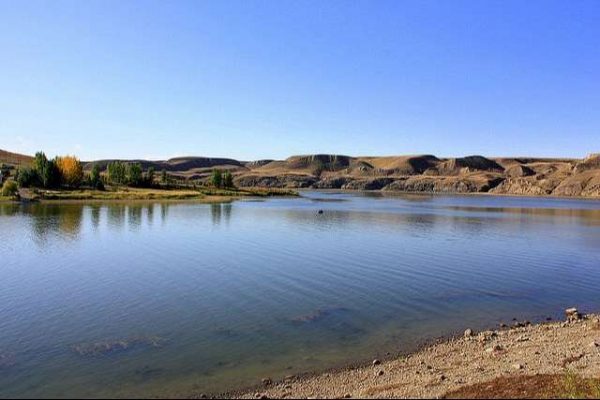
Little Bow Provincial Park offers another fantastic spot for beach lounging or water activities. With its expansive sandy and gravelly beach, complemented by playgrounds and picnic tables, the park is an enjoyable destination for a family day trip from Calgary. Situated near the town of Vulcan, known for its Star Trek Enterprise monument, the park is located at the west end of the sizable Travers Reservoir.
Travers Reservoir is a sought-after location for waterskiing, sailing, stand-up paddleboarding, and swimming. The presence of large docks and a convenient launch site enhances the lake experience.
For fishing enthusiasts, the reservoir is home to 14 different fish species waiting to be caught. Even without a boat, you can enjoy quality fishing off the main docks, increasing your chances of a successful catch.
Birdwatching is a popular activity, and visitors may be fortunate enough to spot the great horned owls perched in the trees. Witnessing these majestic birds is a rare and memorable experience.
It’s important to note that as the summer progresses, the reservoir’s water levels decrease, resulting in a larger, rockier beach.
FAQs
Q: Are the parks open year-round?
A: Most parks are open year-round, but some facilities may have seasonal closures. Check individual park websites for specific details.
Q: Can I bring my pet to Alberta’s parks?
A: While some parks allow pets, there are restrictions. Always check the park’s pet policy before planning your visit.
Q: Are there camping facilities available?
A: Yes, many parks offer camping facilities, ranging from basic sites to fully equipped campgrounds. Reservations are recommended, especially during peak seasons.
Q: Are there entrance fees for the parks?
A: Some parks may have entrance fees or day-use fees. Check the park’s website for up-to-date information on fees and permits.
Q: What’s the best time to visit for wildlife sightings?
A: Wildlife sightings vary, but early mornings and evenings are generally better. Consider guided tours for a higher chance of spotting wildlife.

